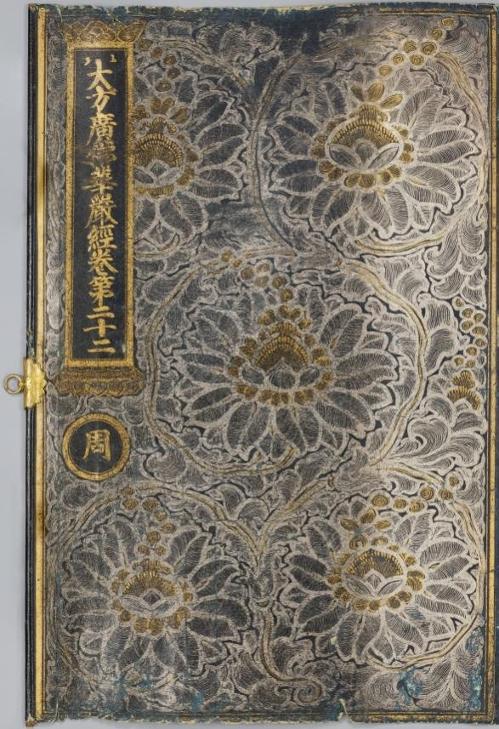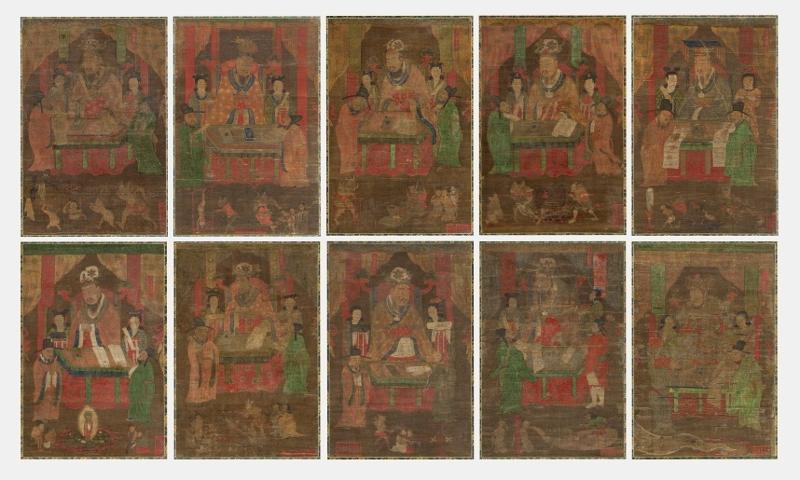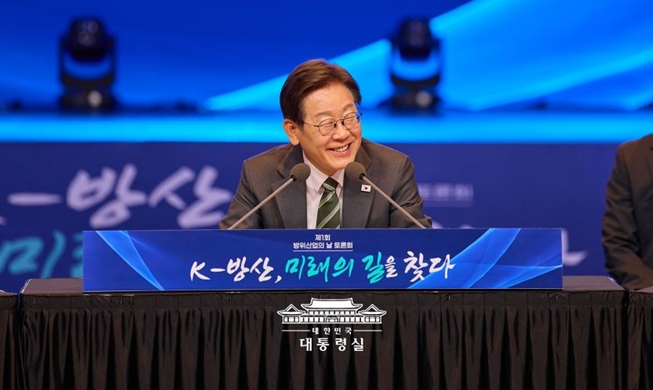
Shown is Transcription of the Zhou Version of the Avatamsaka (Flower Garland) Sutra, Vol. 22 from the Goryeo Dynasty (918-1392). The sutra was made in 1334 as a Buddhist scripture using geumni, a pigment made by mixing gold powder with hide glue, on dark blue paper.
By Yoo Yeon Gyeong
Photos = Korea Heritage Service
Two Buddhist relics -- Transcription of the Zhou Version of the Avatamsaka (Flower Garland) Sutra, Vol. 22 from the Goryeo Dynasty (918-1392) and the Ten Underworld Kings Painting Set from the Joseon Dynasty (1392-1910) -- have been returned to the country from Japan.
The Korea Heritage Service (KHS) and the Overseas Korean Cultural Heritage Foundation on the morning of July 8 held a news conference at the National Palace Museum of Korea in Seoul to announce the return of both relics. The Buddhist scripture was sold by a private Japanese art dealer and collector and returned to Korea in April this year, while the painting set was bought at an auction in Japan November last year.
Produced in 1334, the sutra is a transcription of the teachings of Buddha written in geumni, a pigment made by mixing gold powder with hide glue, on dark blue paper. This scripture serves as the foundation of the country's Hwaeom Buddhist order based on the idea that Buddha and sentient beings are one.
As the 22nd of the 80 volumes of the sutra's Zhou version, the transcription describes the process of Vairocana (Shining) Buddha, the main Buddha of the Avatamsaka (Flower Garland) Sutra, ascending to Tusita, or the fourth of six heavens in the world of desire where bodhisattvas stay before their rebirth on Earth to attain Buddhahood.

Shown are all 10 panels of the Ten Underworld Kings Painting Set. Among Buddhist paintings from the early Joseon era, this is the only one of the two surviving complete copies with all 10 kings to be housed in Korea.
The painting set shows the 10 kings of the underworld who judge the dead for their sins in the afterlife. As a representative artwork of the early Joseon era, this version consists of 10 panels each depicting a king and a scene from hell and is one of only two surviving complete paintings of its kind from the early Joseon period.
"I believe that presenting our precious cultural heritage that was returned from Japan just a month before the 80th anniversary of liberation is meaningful," KHS Administrator Choi Eung-Chon said.
"The Goryeo sutra and the king painting set unveiled this time are works punctuating the excellence of Buddhist art from the Goryeo and early Joseon periods, and we will share their value by allowing the public many chances to see them."
dusrud21@korea.kr
Most popular
- Grammy-winning producer calls Suga of BTS 'amazing artist'
- Animated 'KPop Demon Hunters' tops Netflix charts in 41 markets
- Reunited BLACKPINK releases video preview of world tour
- 'Universal love, family' themes fuel success of 'King of Kings': director
- New York Times picks 'Parasite' as top movie of 21st century
